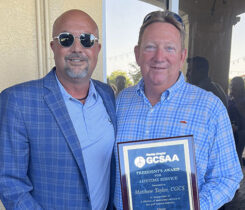PGA Tour pledges 5-year $250,000 grant for GCSAA golf course BMPs
The PGA Tour will contribute $250,000 over five years to the GCSAA to help implement best management practice (BMP) models for golf courses, with a focus on localities and states in which PGA Tour events are held, the GCSAA recently announced in a news release.
The PGA Tour is joining the USGA in an industrywide effort spearheaded by the GCSAA to establish BMPs across the country. Funding is channeled through the Environmental Institute for Golf, the philanthropic organization of GCSAA.
“We believe in the good work that golf course superintendents are doing every day to establish quality, healthy playing conditions for all golfers, while protecting our environment,” says Tim Finchem, PGA Tour commissioner, in a news release. “Best management practices will help us demonstrate that golf courses can deliver benefits to everyone in a community. This also represents a longstanding commitment to environmental excellence at our own TPC courses.”
The goal is to have BMPs in place in all 50 states by 2020, providing resources to help golf course superintendents and increasing credibility for all professional land managers. The golf industry as a whole supports and promotes BMPs to protect the environment and the future of the game. Currently, BMPs are in place in some form in 11 states: Colorado, Florida, Georgia, Michigan, New Jersey, New York, Oregon, Pennsylvania, Rhode Island, Vermont and Virginia.
“Best management practices are essential to all superintendents to measurably demonstrate that we are doing the utmost in our profession to care for the land while providing the best conditions possible for golfers,” says Jeff Plotts, director of golf course operations at TPC Sawgrass. “We want BMPs to be part of the fabric of all TPC Network courses. But, we all need to work together to be qualified experts in our field.”
The term BMP was first used in 1977 in response to the Clean Water Act, and it referred only to soil conservation practices to protect water quality. Today, however, the term takes into account everything from drought management to pesticide application.
“Agronomic and environmental best management practices are key to providing healthy turfgrass and quality playing surfaces,” says Rhett Evans, GCSAA chief executive officer. “They provide the platform for success in professional land management — incorporating environmental protection, proper agronomics and wise use of our natural resources.”










